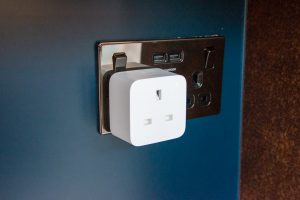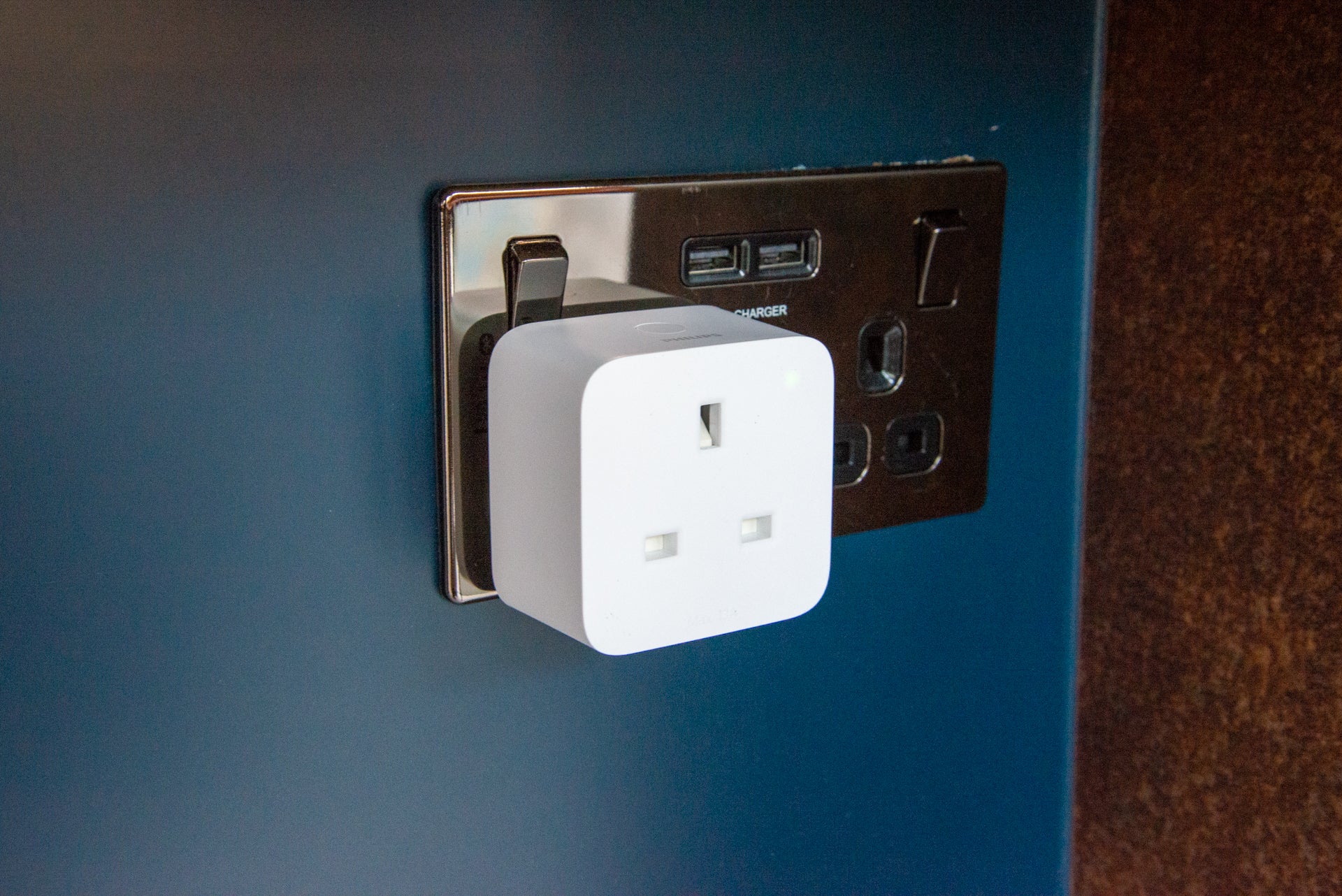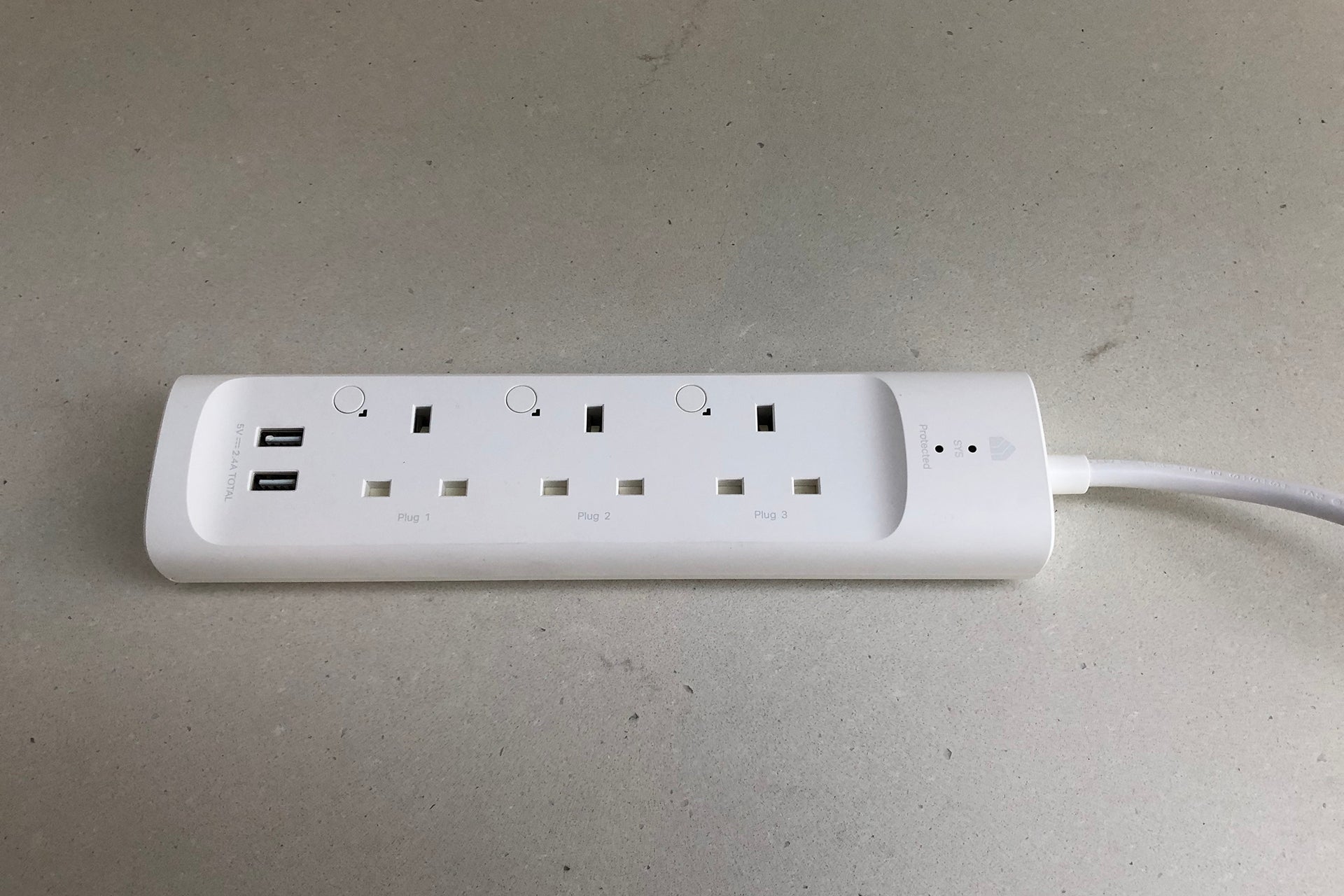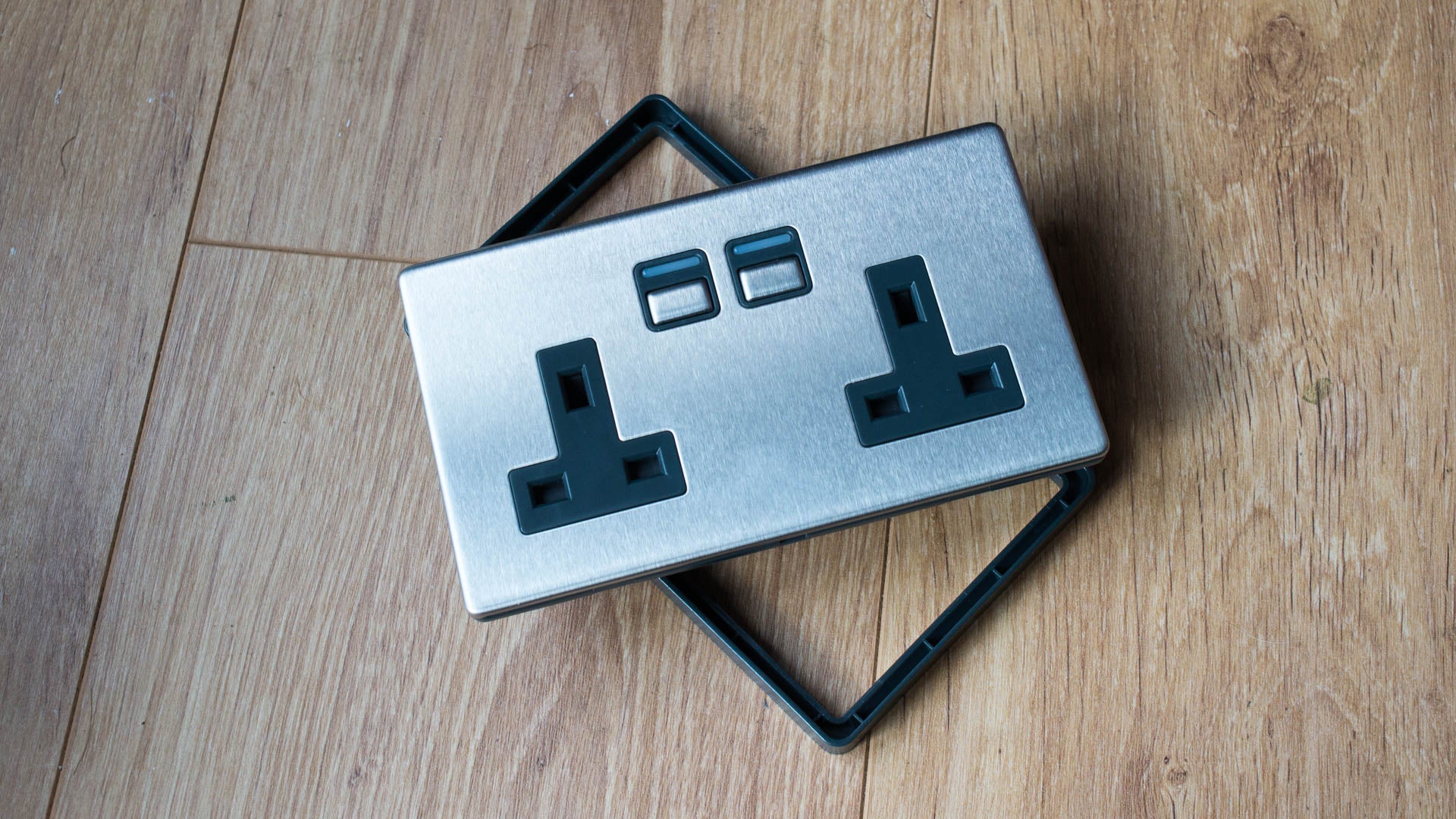
Smart plugs are the essential part of any smart home. Turning the dumb into the smart, with the best smart plug you can toggle devices on or off from anywhere in the world. Whether you want to turn on a lamp that you love, improving convenience, or check if you’ve left the iron on when you go out, smart plugs are suprisingly versatile additions to any home. In this guide, we’re bringing you the best plugs that we’ve tested.
We’ve reviewed the vast bulk of the main smart plugs, but we’re focussing on just the best ones here. We’ve recommended products that work with any system, and we’ve also got some products that are add-ons for existing systems, such as Philips Hue. The latter requires you to have invested in some products already, but these products often work out cheaper if you have and you’ll often get more features.
How we pick the best smart plugs
All of our smart plugs go through the same rigorous testing regime. For each plug, we test how easy it is to get connected, and that basic on/off control works properly. Smart plugs are about more than just using the app to turn them on or off, so we also test each product’s more advanced features. For instance, we look at the timing and scheduling options, which can help fool burglars into thinking that you’re at home when you’re out.
Increasingly, integration with other products is important, so we tested each product to see how well its IFTTT channel worked, if available. With IFTTT, you can control your smart plug when triggered by another device. For example, you may want to turn on a lamp when your security camera spots movement. We also looked at integrations with other systems, including Samsung SmartThings.
Voice control is increasingly important, so we tested each system for compatibility with Amazon Alexa, Apple HomeKit and the Google Assistant.
If you’re not sure where to start, read our buying guide at the bottom of the page for more information.
For convenience, we’ve listed our choices below, but read on to find out more about each product.
- Best overall smart plug – Belkin WeMo Insight Switch
- Best budget smart plug – TP-Link HS100 Kasa Smart Wi-Fi Plug
- Best flexible smart plug – Belkin WeMo Switch
- Best Hue and HomeKit smart plug – Philips Hue Smart Plug
- Best multi-way smart plug – TP-Link Kasa KP303 Smart Wi-Fi Power Strip
- Best wall socket smart plug – Lightwave Generation 2 smart sockets
1. Belkin WeMo Insight Switch
The most powerful smart plug

The WeMo Insight Switch is Belkin’s top-of-the-line smart plug. As with other WeMo products, the smart plug connects to your wireless network, so there’s no need for any additional hubs. It’s quite chunky, though, and you may struggle to plug in some devices next to this plug in a double socket.
Setup is easy through the WeMo app, and you can set the thumbnail image as a photo of your choice, so you have a neat visual guide to what the plug is controlling.
Once hooked up to your wireless network, the app lets you toggle the WeMo Insight Switch on or off. Smartly, this plug can also monitor power usage. If you enter details of your energy charges (in kW/h), the Insight Switch can even tell you how much your appliance is costing you to run.
Beyond basic app control, the Insight Switch has several smarter control methods. There’s the option for a power-off timer and a schedule. The Away mode is neat, as it will turn the Insight Switch on and off randomly between the hours you set, making it appear as if someone is in your home while you’re away.
Since the Insight Switch can monitor power, you can perform some nifty tricks, too. With the Rules, you can monitor the power level of a device that drops into standby mode. The standby/off threshold can be set in the app to suit different applications. Using this power you can, for example, get the WeMo app to notify you when your washing has finished.
You can also set alerts for devices that have been on for too long. A good way to monitor how long kids have been watching TV, or to warn you if you’ve left an electric heater turned on.
WeMo also has Works with Nest certification, so you can automatically turn devices on or off when your thermostat switches modes between Home and Away (or vice versa).
There’s currently no Apple HomeKit support, although Belkin has announced a Bridge that will add this feature. Alexa and Google Assistant support is available, with voice commands letting you toggle lights on and off. SmartThings support is welcome, allowing you to integrate all of your WeMo products with your other smart home kit.
There’s a powerful Insight Switch IFTTT channel. Triggers include monitoring when a switch is turned on or off, or when a device goes into standby mode. Actions include turning a switch on or off. Essentially, you can control other devices using your WeMo device or fully control your WeMo switch using another stimulus. To top it all off, the Insight Switch has a physical power button on top for manual control.
In places you want a bit more control and automation, the Insight Switch is the smart plug to buy.
Read our full WeMo Insight Switch review
2. TP-Link HS100 Kasa Smart Wi-Fi Plug
A great budget choice
As with TP-Link’s other smart home devices, the Smart Wi-Fi Plug connects to your wireless network. This means that you don’t need any other hubs to get going, but you will need a strong wireless signal where you intend to use the plug.
Setting up the plug is easy using the TP-Link Kasa smartphone app (Android and iOS). Once the Smart Wi-Fi Plug has been detected, you just give it a name. Neatly, you can select an icon so you can easily see the type of device that you’re controlling, such as a lamp or fan. After that, you enter your network details and the Smart Wi-Fi Plug is ready to go.
From the app, you can toggle the switch on and off. It’s a shame that there’s no physical button on the plug to let you do the same thing without reaching for your smartphone.
As well as basic control, the Kasa app has some neat features. Timers are a good way to turn your Smart Wi-Fi Plug on or off after a set time. Schedule is a good way to automatically have your plug turn on and off at set times, which can be handy for operating a night light.
I like the Away mode, which will randomly turn the Smart Wi-Fi Plug on and off during the hours you set. If you use this with a lamp, it can deter burglars by making them think you’re at home.
Voice control is available via Google Assistant and Amazon Alexa, but there’s no Apple HomeKit support. Voice control, as you may expect, is simple but effective: you can toggle the plug on or off. Amazon support continues to the app, and you can toggle the plug on or off using the Alexa app.
IFTTT support is available, although there are only Actions. So you can turn your Smart Wi-Fi Plug on or off when something happens – say, a camera picking up motion. Without Triggers, you can’t control other devices when your Smart Wi-Fi Plug is operated.
For basic control of your smart devices, the TP-Link Smart Wi-Fi Plug is excellent value and a great choice.
3. Belkin WeMo Switch
Flexible smart plug with plenty of third-party support

The WeMo Switch is the simpler version of the Wemo Insight Switch, missing the ability to monitor power usage. As such, the WeMo Switch is a better choice in scenarios where you simply wish to toggle a device on or off, and don’t require smarter control or automation.
As with the other WeMo products, the WeMo Switch connects to your home network via Wi-Fi, so there’s no need for any bridges or other devices. Once your smart plug has been detected, you can assign a photo that you’ve taken to make it easier to see which device you’re controlling.
Once done, the app lets you toggle power to the smart plug, although there’s a physical button on the WeMo Switch for manual control. Basic control aside, the WeMo Switch has some of the widest control methods of any smart plug.
From the app, you can you set a power-off timer and configure a schedule for turning the WeMo Switch on an off. The Away mode is a nice touch, with the WeMo Switch turning on and off randomly between the hours you set, helping to deter intruders by giving the appearance that you’re at home. Works with Nest certification is useful, so you can have the WeMo Switch turn on or off when your thermostat changes modes.
There’s no Apple HomeKit support at the moment, although the recently announced bridge product will change that. Still, that leaves you with Amazon Alexa and Google Assistant support, with both offering up simple voice control to toggle the Switch on or off. SmartThings support is good to see, allowing you to integrate your WeMo Switch with your other smart devices.
There’s a full IFTTT channel with Triggers (the Switch turns on or off) and Actions (you can power the Switch on or off). This adds to the WeMo Switch’s flexibility.
The WeMo Insight Switch has some advanced controls that make it a better choice in some situations, but the Wemo Switch is a top choice if you just want to toggle devices on and off.
4. Philips Hue Smart Plug
Well-priced, flexible and it even works with HomeKit

Designed to work with the Philips Hue lighting system, the Philips Hue Smart Plug can work with either Zigbee (if you have a Hue Bridge) or Bluetooth. The former is the best option, and we recommend this smart plug for those that have a full Hue system. There are two main reasons. First, Zigbee has better range and reliability than Wi-Fi and, secondly, if you have a network failure, you can still operate the smart plug using a Hue remote control.
Connecting to the Hue ecosystem gives this smart plug another advantage: it’s the only smart plug that we’ve tested that works with Apple HomeKit, so you can include this product in all of your automations. Otherwise, there’s Google Assistant, Amazon Alexa and IFTTT support.
Installation through the Hue app is a little fiddly and, if you just want to control this plug via a device, you’ll need to put it in its own room or Zone. If you don’t have Hue already, then one of the other products on this list will do a better job; if you do, then buy this one.
Read our full Philips Hue Smart Plug review
5. TP-Link Kasa KP303 Smart Wi-Fi Power Strip
A smart multi-way strip for controlling more than one device

You can plug any multi-way strip into a smart plug, but what if you want to control multiple devices individually? The best way to do that is with the TP-Link Kasa KP303 Smart Wi-Fi Power Strip. This product gives you three individually controllable sockets all in one neat device, and you get two USB devices for charging, too. The main power cable is a little short but that’s our only complaint.
Controlled via the TP-Link Kasa app, each socket can have its own name and icon, giving you full individual control, including schedules and power toggling. Individual control spills over into other places, too, with Amazon Alexa, Google Assistant, SmartThings and IFTTT support.
More importantly, the price of this product makes it cheaper than buying three individual smart plugs and plugging them into an extension strip.
Read our full TP-Link Kasa KP303 Smart Wi-Fi Power Strip review
6. Lightwave Generation 2 smart sockets
A neater way of adding smart plugs if you don’t mind a bit of DIY wiring
If you don’t want a clunky old smart plug sticking out of your wall, the Lightwave Generation 2 Smart Socket is the way to go. You’ll need a bit of DIY skill to replace an existing double socket, but you get a far neater experience.
Each socket is individually controllable via the Lightwave app, and you can manually tap the power button to turn a socket on or off. From the app, you can set schedules, automatically turning your sockets on and off when you like; again, it could be a handy way of fooling people into thinking that you’re at home.
The main benefit of the Generation 2 kit is that the protocol used has state, so you can see if your socket is turned on or off. Amazon Alexa and Google Assistant support are built-in, but the sockets are also compatible with Apple HomeKit, which makes them a rarity.
Lightwave’s DIY approach gives you a neater finish, but the installation is trickier. If you plan to kit out the rest of your home with Lightwave light switches and sockets, this is the best option; for one-off control, a traditional smart plug is a better bet.
Read our full Lightwave Generation 2 Smart Socket review
That was our pick of the best smart plugs. If you want to know more about what to look for when buying a smart plug, read on.
Smart plug buying guide
Want to make an ordinary lamp smart, or be able to turn off an electric heater that you left on from your smartphone? Then a smart plug is the bit of kit you need. A smart plug sits between the device that you want to control and the wall socket. Then, from the app you can toggle power to any device, turning the dumb into the smart.
Best smart plugs – What type of smart plugs are available?
All smart plugs work in roughly the same way, but they use different protocols for control. Perhaps the easiest smart plugs to use are Wi-Fi-enabled devices that connect to your home network. These require no additional hardware and, as long as they’re in an area with a strong wireless signal, the smart plug will work anywhere in your home.
Next are smart plugs that use other communications protocols, which connect through a hub. These devices can be cheaper, but the main reason to buy them is that they integrate with other systems. For example, buy a LightwaveRF On/Off Socket, and you can use it with the same system that controls your smart light switches.
Best smart plugs – What about voice control?
While app control is good to have, voice-assistant support is increasingly important, allowing you to control your smart plugs with your voice. Amazon Alexa support is the most popular, with Google Assistant coming a close second; currently, Apple HomeKit support isn’t very popular.
Best smart plugs – What other control methods should I look for?
Although using an app or your voice is a handy way of turning lights on and off, you may want to use smart buttons to control your smart plugs. Using a product such as the Flic Hub, you can add wireless buttons to your home, clicking them to turn your smart plugs on or off. The main issue is finding smart buttons that have support for your devices. Belkin Wemo smart plugs are the best supported and our choice when it comes to remote control. If you are planning to use smart buttons then make sure they support your plugs of choice before you buy.
Best smart plugs – What else should I look out for?
IFTTT support is a neat way of automating your home, as you can control your smart plugs when something else happens. For example, you may want to turn on a light if your security camera picks up movement.
Look out for advanced features in the app, too. Schedules and timers are useful features, enabling you to automate when a device operates.
The post Best Smart Plugs 2020: Turn dumb things into smart things appeared first on Trusted Reviews.
from Trusted Reviews https://ift.tt/3kQibGa
via IFTTT


Comments
Post a Comment